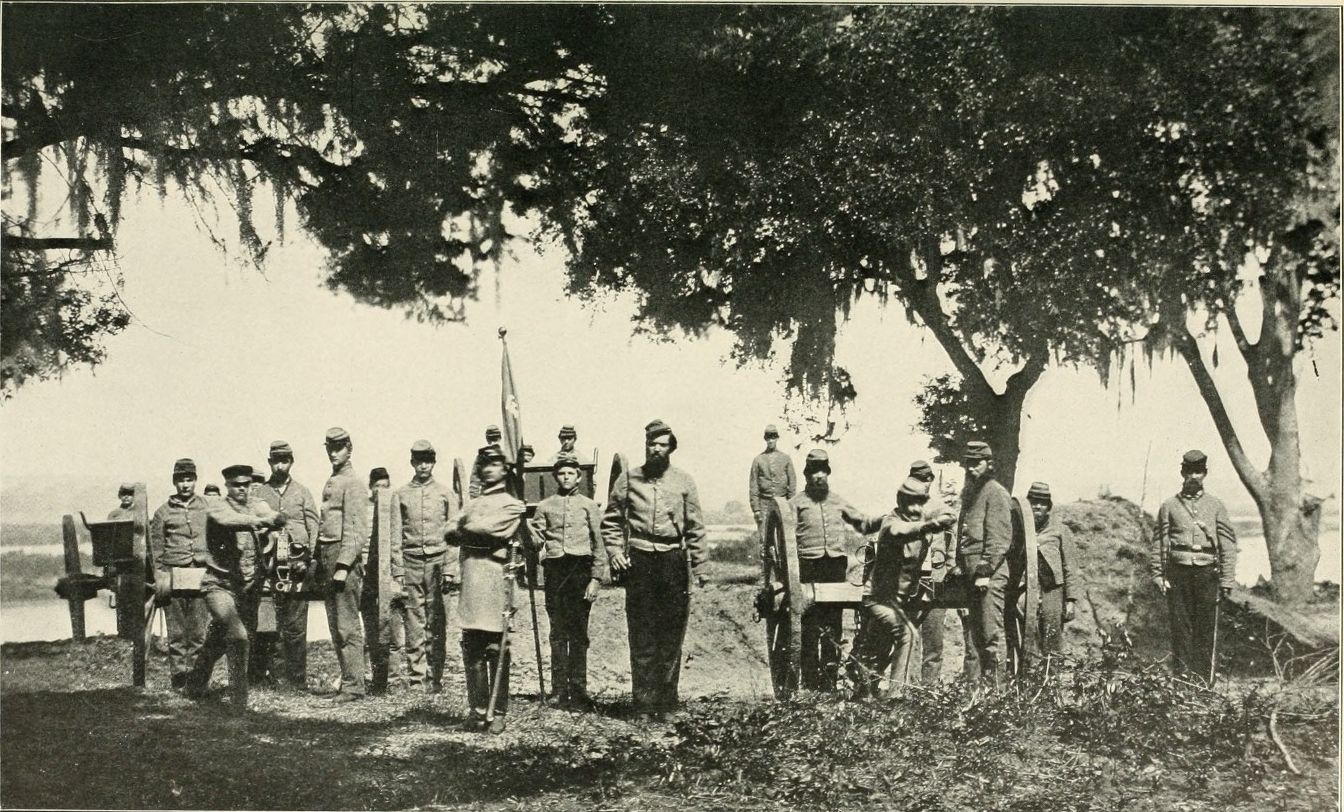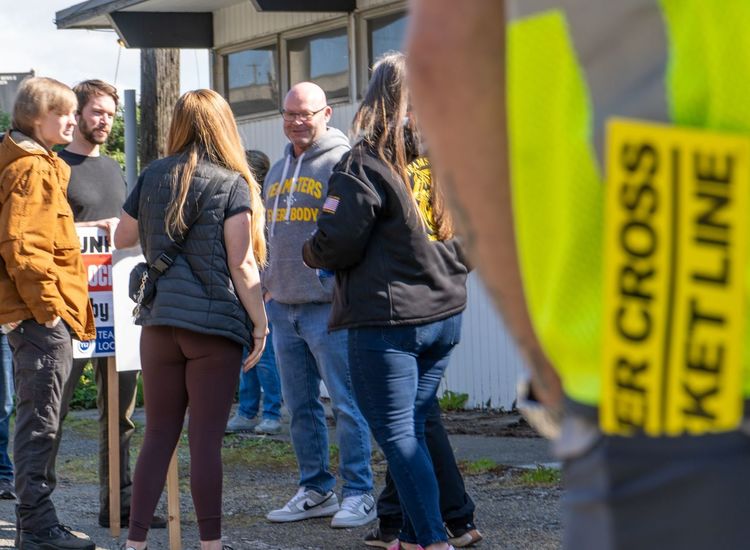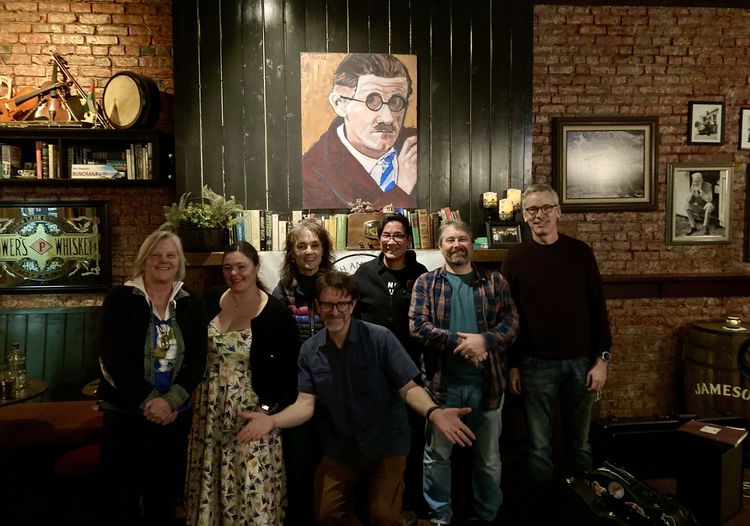[The article is one a short series called History by the Book. The featured work here is David T. Gleeson's "The Gray and the Green." For others in the series, click here and here.]
When in the early days of 1861 John Maginnis, the Irish editor of the New Orleans newspaper True Delta, saw troops marching down St. Charles Avenue and turning right on Canal Avenue towards the river, he wasn’t exactly pleased. They’d been ordered by Louisiana’s Gov. Thomas Moore to take a steamer to Baton Rouge, where they’d be among the militia units seizing the Federal arsenal.
Maginnis was typical of his fellow countrymen in opposing secession up to that point; in his support, too, for the national Democratic Party, which the Irish saw as pro-immigrant and in favor of the common man generally; and in being “safe” on the issue of slavery from the white southern standpoint.
The immigrant Irish in the South overwhelming voted for Stephen Douglas in November and not the Southern Democrat candidate John C. Breckinridge. When, however, the Republican Abraham Lincoln emerged as the presidential victor, all changed, changed utterly for the Irish and they backed the secessionist cause. Maginnis would remain a holdout until the new president made war on the rebellious South and then he, too, would throw in his lot with the Confederacy.
David T. Gleeson, author of “The Green and the Gray: The Irish in the Confederate States of America,” says Maginnis saw bringing up the rear on that day the “Sarsfield Rifle Guards, named for the famed 17th century cavalryman Patrick Sarsfield. They were commanded by Captain James O’Hara and were the Irish militia company of ‘uptown’ New Orleans, based in the heart of the community around St. Patrick’s Church on Camp Street. O’Hara ran a boarding house and had a personal estate worth $300, but he was not a slave owner. Nonetheless, he led his Irish unit in the confrontation with Federal authorities, obeying the orders of his adopted state, and ignoring the oath to his adoptive country.”
Across the South, in Charleston, South Carolina, the Meagher Guards, named in 1853 for Thomas Francis Meagher, were the first Irish involved in the seizure of Federal property — “the thrilling [military] activities” of Dec. 27, 1860, seven days after South Carolina left the Union.

The Charleston Mercury newspaper announcing South Carolina’s secession in December 1860.
The unit would have to change its name after Meagher himself actively backed the Union cause; this wasn’t a problem for the militias that chose names of dead Irish patriots, like the Emmet Guards of Mobile, Alabama. The name of a living patriot of the Southern variety was taken by the unit that Tuam, Co. Galway, native Dick Dowling joined, the Jeff Davis Guards of Houston, which became part of the 1st Texas Heavy Artillery and helped make Dowling a famous name in the state.
Just 5 percent of the immigrant Irish in America, 84,763 people, lived in the 11 Confederate states, and an additional 94,585 were residents of the border states of Kentucky, Maryland and Missouri. In St. Louis, the Union cause was strongly associated with the immigrant German community, whereas Roscommon-born priest Fr. John Bannon took a contingent of Irishmen from that Missouri city south to fight for the Confederacy. But generally speaking those born in Ireland didn’t diverge a whole lot from what the rest of the population did in the Border states, and they made up less than 10 percent of the overall Irish-born contribution to the Confederacy’s military cause.
Gleeson settles on the figure of 20,000 Irishmen in the South’s army, compared to the 150,000 who fought for the Union — though that would be an impressive 50 percent of those who were eligible, twice that of the North’s number.

Professor David T. Gleeson, a Limerick native who teaches at the University of Northumbria in Newcastle-on-Tyne.
“The Confederate experience of native-born Protestant who never showed any signs of ‘Irishness’ in their lives beyond their last name was very different from that of a company of Irish famine immigrants who had perhaps been in the South a few months, or years at most, serving in an explicitly Irish ethnic unit,” he writes. “But those Irish-born who did not join an ethnic unit could not escape being defined as Irish.” He has in mind here someone like the Cork-born “Stonewall of the West,” Patrick Ronayne Cleburne, the highest profile and most successful Irish commander in the South’s army.
The opportunity to prove one’s manliness was certainly a reason young Irishmen joined the Confederate cause in large numbers, and some likely would have been aware of an ethnic reputation to maintain.
Thomas Davis, the Young Ireland leader, had said not long before, “The Irish are a military people — strong, nimble and hardy, fond of adventure, irascible, brotherly and generous — they have all the qualities that tempt men to war and make them good soldiers.”
“The image of the fighting Irish did transfer to the battlefield,” Gleeson writes, “with the Irish gaining a reputation for bravery. Nonetheless, they had a propensity to desert, and this fact, along with the Irish civilian experience of the Confederacy, played a role in undermining the native view of Irish Confederates because it challenged the image of a coherent and united Confederate nation.
“The history of the Irish in the Confederacy thus provides some insight into the extent and effectiveness of Confederate nationalism. Irish immigrants had already negotiated their Irishness with an American national identity, and now they faced adapting to a Confederate one.
“Though very few had any direct connection with slavery,” adds Gleeson, who works at the University of Northumbria in Newcastle-on-Tyne, “thousands supported a new republic that had the explicit aim of preserving that ‘peculiar institution.’ Their reasons for doing so complicate our view of national identity in this era of the nation-state.”

The Irish were, nonetheless, after the British the second most likely foreign-born group to acquire slaves. Even some who’d arrived impoverished in the U.S. became directly implicated in the “peculiar institution” as they moved up the socio-economic ladder. Patrick Murphy of New Ross, Co. Wexford, for example, was a bridge builder and slave-holder in Natchez, Mississippi, who though a reluctant secessionist signed up as the “cursed Yankees” approached. He was to spend two years in a prisoner-of-war camp before being exchanged in March 1865.
Gleeson also includes in his narrative a handful of important American-born figures who identified strongly with their Irishness, like A.G. Magrath, the son of a Presbyterian immigrant who had fought in the 1798 Rebellion, an active member of the Hibernian and St. Patrick’s Benevolent Societies in Charleston and a former captain of the Irish Volunteers Militia company. Magrath, as an “active supporter of every Irish national movement, was called upon to give fiery speeches against British rule.” A reluctant secessionist initially, he was the last governor of South Carolina during the Confederacy. Another in the U.S.-born category is Charleston lawyer and politician M.P. O’Connor.
The Irish had been going to the South for generations and taking to politics and controversy with ease. Some political exiles from the post-1798 period, like Denis Driscoll of Augusta, Georgia, and John Daly Burk of Petersburg, Virginia, “were very active journalists for the Jeffersonian cause as well as defenders of the South and slavery.”
The best-known Irish supporter of the South and slavery, though, was of a later revolutionary generation. As a 32-year-old journalist in Ireland John Mitchel’s writings calling for rebellion in 1848 earned him a treason conviction and a death sentence. The latter was commuted to transportation to Tasmania. He escaped from there and landed in the U.S. in 1853.
Mitchel, who popularized the idea that the Great Famine was a government genocide rather than a natural disaster, won a following from some of the poorest Irish because of the strongly social aspect to his nationalist rhetoric. Meantime, his outspoken pro-slavery views made him a hit in the South, and he moved to Tennessee in 1855. His Citizen newspaper founded in New York became in Knoxville the Southern Citizen.
“As a romantic nationalist since the early 1840s, Mitchel believed in the essential nature of a national people,” writes Gleeson, “Nationality was not something you invented. It was something innate, with deep historical roots. In his first defense against charges of inconsistency, he played the ethnic/national card. He denied there was a natural right to liberty: ‘I am not aware that every human being has an “‘inalienable right to life, liberty and the pursuit of happiness.” People often forfeit life and liberty, as to “happiness” I do not even know what it is. On the whole I fear that it is jargon.” The liberty that Mitchel spoke of for Ireland, he explained, was ‘the sort of liberty — no better, no worse— [than that] which the slaveholding Corinthians fought for against the Romans, and the slaveholding Americans wrung from the British. It was National Independence.’”
And many of his likeminded fellow nationalists in Ireland and admirers in the U.S. agreed, Gleeson says — it was the nation, not the individual, that was entitled to liberty.
Mitchell wanted the South to understand that the white European laborers were of the “highest and choicest breed and blood of men.” The southern population was “Celtic” for Mitchel, “by far the greatest part Irish, French, Welsh, Spanish” and the Celt was the “superior breed; of finer organization, more fiery brain, more passionate—less greedy, grabbing, griping and groveling.”

John Mitchel.
Gleeson says, “In fact southerners were the Irish’s Gallic cousins, he believed, and the Irish should rally to the support of any and all attempts at southern nationhood. His confidence in his own and his countrymen’s whiteness implied that the Irish and southerners were members of a ‘superior’ branch of the ‘master” Caucasian race.”
Other Irish emigre apologists for slavery and racism were Mitchel’s Young Ireland protege Joseph Brenan, who in New Orleans in 1856 penned the poem “The Ballad of the Young South,” and T.W. MacMahon, who left Ireland in 1849 and went South in 1859, where he wrote “Cause and Contrast: An Essay on the American Crisis,” dedicated to President Jefferson Davis. MacMahon went full-throttle on “scientific” racism, which Gleeson points out was problematic for someone of his background, as fellow race theorists elevated the Anglo-Saxon. Alabaman Josiah Nott, for one, labeled the “Celtic” Scots-Irish of the southern backcountry as “stupid and debased in the extreme.”
A more durable and mainstream figure was Patrick Walsh, a member of the Meagher Guards who takes the Irish story in the South up to his death in 1899 when he was mayor of Augusta, Georgia, having previously had a stint in the U.S. Senate. Born in Ballingarry, Co. Limerick on New Year’s Day, 1840, he was brought by his parents to South Carolina in 1852. He was apprenticed to a printer and went to college at night in Washington DC to study law, only to return home to fight for the Confederacy. Gleeson, who is himself a native of Limerick, says that Walsh, as the youngest of three sons in the army, supposedly won an exemption to look after his elderly parents, who were living in Augusta. He began a wartime journalism career that included editing the Pacificator, a paper “devoted to the interests of the Roman Catholic Church in the Confederacy.”

Patrick Walsh.
Many in the South recognized the Catholic Church as the one denomination that had not divided over slavery, and leading clerics after secession were reliably supportive of the Confederacy. For instance, Fr. Jeremiah O’Neill, who had been critical of Daniel O’Connell’s abolitionism on a visit to his home county of Kerry in the 1840s, spoke passionately in favor of secession at a post-1860 election rally in Savannah, where one in five whites was Irish-born. Several clerics feature in Gleeson’s account, but Patrick Lynch is particularly notable in that he was sent by the Confederacy to Europe to make the case for slavery and attempt to win Vatican recognition. The Irish-born Lynch, who was bishop of Charleston, was himself an owner of slaves.
While journalistic and clerical elites kept the flag flying and the soldiers fought bravely on the battlefield, the civilian Irish population was in a vulnerable position, morale-wise, as the war turned against the South. The authorities never doubted the loyalty of non-native groups, but the media often focused on alleged Irish, Jewish and Northern participation in public protests. One Richmond newspaper after the “Bread Riot” of April 1863 referred to it as the work of “prostitutes, professional thieves [and] Irish and Yankee hags, gallows birds from all lands but our own.”
The refusal of some Irish workers to serve in the local militias during times of crisis in Richmond and Charleston drew anger. Gleeson cites the case of laborer James Gorman who complained at being imprisoned as a shirker even though he was not a naturalized citizen. The British consul in Charleston intervened on his behalf, but when he went back to his place of work he was refused his old position and back pay worth $150.
The Irish in the South adapted more quickly than most to the reality of Federal occupation, but later they were reliable supporters of the new cultural nationalism built around the myth of the heroic and noble “Lost Cause,” which was often compared to the lost cause of Ireland.
Confederate memorializing would in time move out from the cemetery into the public square as white supremacy asserted itself fully again. Perhaps the best-known Irish example is the statue of Lt. Dick Dowling that was unveiled in Houston in 1905 with his daughter as guest of honor. The Galway-born artillery officer was credited with saving the Texan city the ignominy of Union occupation before the war’s end. His parents and some other family members had died of the yellow fever in New Orleans, and the war hero and successful saloon-keeper would succumb to the same disease in Houston in 1867. But Dowling’s name lives on to this day. A few days after the violent events in Charlottesville on Aug. 12, 2017 — arising out of the Unite the Right rally in defense of the memorials to Robert E. Lee and Stonewall Jackson — a young man described as a “bit disconnected from reality” was stopped in his attempt to destroy the Dowling statue with explosives.
The city of Houston had made its point in a quieter and legal way earlier in 2017 by changing a street that had been named in Dowling’s honor to Emancipation Avenue.









